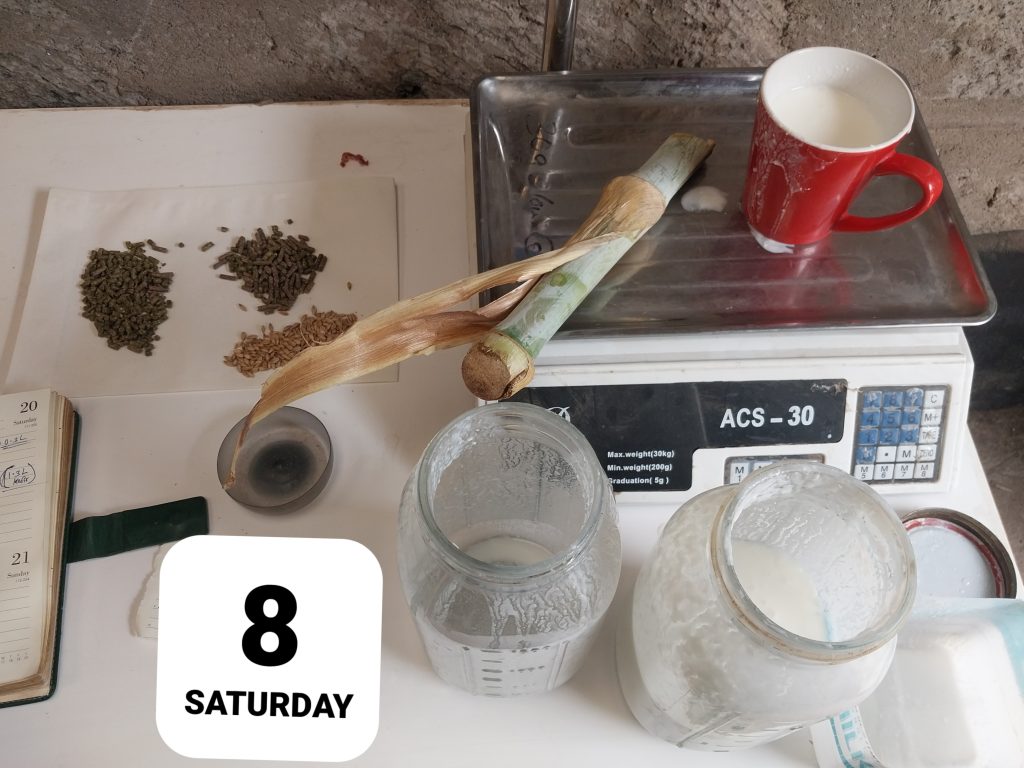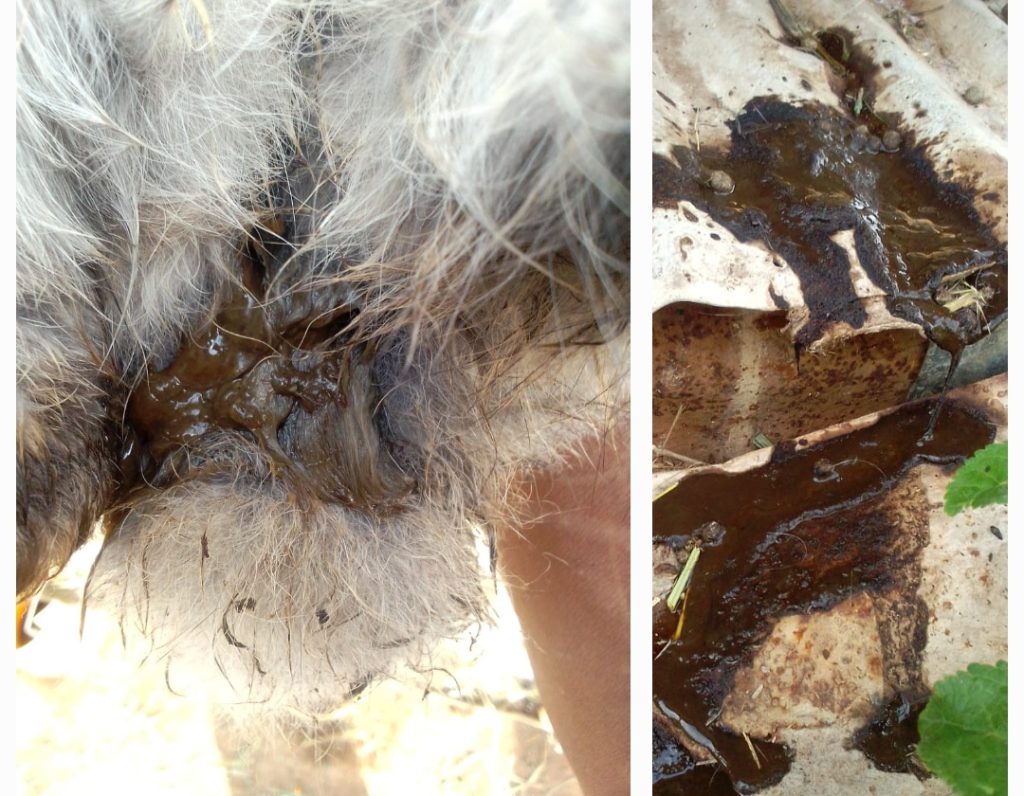Introduction
In our ongoing efforts to improve rabbit farming efficiency, we conducted a study to compare different feeding strategies. The goal was not to endorse any particular brand or ingredient but to explore cost-effective ways farmers can optimize growth rates while managing feed costs. This study highlights key observations and encourages further trials by farmers in different setups.
Study Methodology
Our research involved testing two popular commercial rabbit pellet feeds and whole-grain alternatives. Hay and water were fed ad libitum as usual, with the experiment focusing on the pellet concentrate only, at this time. Hay quality research is left to a future study. We evaluated their cost-effectiveness using weight gain per week as the farmer’s practical metric for production efficiency, calculating feed price per kilogram of weight gained weekly and observing feeding behaviors.
Initial observations indicated that weaner rabbits averaged 0.8 kg at two months of age and slightly less at 1.5 months, the latter marking the experiment’s starting point. After consistent weekly weight measurements through the fifth week, we confidently project the time required to achieve the target live weight of 2.5 kg post-growth/fattening in this article below.
The experiment identified a 75 g pellet-and-whole-grain mix from one company of the two studied, as the most cost-effective strategy among the feeds studied, and as what is available consistently countrywide to Kenyan rabbit farmers. For nursing Does, we recommend 150 g daily during the first 21 days of lactation. During pregnancy, 75-150 g suffices depending on supplemental concentrate quality, increasing to 225 g from 21 days post-birth (when kits begin eating) until weaning at 1.5 months.
A notable finding from the experiment is that a higher-cost pellet brand resulted in a shorter feeding-to-market time compared to a cheaper alternative, ultimately making it the more cost-effective option for long-term rabbit production. The study spanned five weeks, with adjustments to feed combinations at key intervals.
The study explored the following feeding approaches:
- Commercial Pellets Only – Two different brands of commercially available rabbit pellets were tested against each other.
- Pellets Mixed with Whole Grains – A 50-50 combination of rabbit pellets and a commonly available whole grain was introduced.
- Increased Feed Ration – Some rabbits were fed 150 g daily instead of 75 g to observe potential efficiency improvements.
- Probiotic Supplementation – Kefir milk was tested as a probiotic additive to assess its impact on weight gain and feed conversion.

Key Findings
- Pellet vs. Pellet: Performance varied between commercial pellet brands, with some yielding higher weight gain per unit of feed, while others were more affordable but resulted in slower growth. Farmers may need to balance cost and efficiency when selecting a pellet brand.
- Whole Grain Integration: Mixing whole grains with pellets showed potential for cost savings, and faster weight gains, as some combinations resulted in improved weight gain at a lower cost per unit gained. However, some wastage (up to 20%) was observed, particularly in larger feed portions (150 g rations), where excess feed led to rabbits spilling the grains with some rejecting and filtering out the new grain in the first few days after introduction. Notably, 90% of the grain wastage was observed in the 150 g rations.
- Increased Rations: Feeding 150 g instead of 75 g resulted in faster growth rates, but efficiency depended on the feed formulation. In some cases, the extra feed led to more waste rather than improved conversion.
- Probiotic Supplementation: The addition of kefir milk had mixed results. Some trials showed a slight increase in weight gain. In this case, kefir administration, as had earlier been considered into solid feeds at much higher amounts targeting weight gain, is eliminated alongside its laborious solid-liquid unscalable mixing operation, to an easier 0.5% application in drinking water once or twice a week, as a general normal gut probiotic only, not as a weight factor. We suggest including it as whey with cheese filtered out in drinking water, in very tiny amounts that retain freshness in drinking water at a negligible cost.
Study Results Table
| Feed Type | Feed Ration (g) | Weight Gain (kg/week) | With Kefir (kg/week) |
|---|---|---|---|
| Feed A | 75 | 0.1234 | N/A |
| Feed B | 75 | 0.03663 | N/A |
| Feed A + Whole Grain | 75 | 0.185 | 0.1838 |
| Feed B + Whole Grain | 175 | 0.01292 | 0.1663 |
| Feed A + Feed B + Whole Grain | 75 | 0.087 | 0.1063 |
| Feed A + Whole Grain | 150 | 0.2519 | 0.3042 |
| Feed B + Whole Grain | 150 | 0.2142 | 0.23 |
| Feed A + Feed B + Whole Grain | 150 | 0.2385 | 0.2537 |
Lessons for Farmers
- Test Feeds on Your Farm – Results may vary based on breed, farm conditions, and feeding systems. Small-scale sample trials can help identify what works best for your setup from time to time.
- Monitor Feed Wastage – Larger rations and certain feed types may encourage more spillage. Using smaller portions and well-designed feeders can minimize waste. We observed that for a hutch with five rabbits, two bowls were required to accommodate 150 g rations, filling them to the brim, which encouraged kits to dig and waste feed, besides becoming a hygiene and congestion issue.
- Balance Cost vs. Growth – The cheapest feed is not always the most cost-effective if growth rates are poor, and you miss the first 4 months of highest growth metabolism stage. For commercial production, growth is fastest early, than later. Think of the curve of diminishing returns. Farmers should compare price per kg of feed with weight gained per kg.
- Whole Grains Are an Option but Require Management – Other important considerations come into play, such as what is the major composition of the grain, vs desired outcome for different growth stages of either fattening or breastfeeding. Expert exploration or consultation is important here. Strategies like always retaining professionally produced pellets at 50% is important, so the farmer formulation error may remain on the supplementing grain. In our case, the grain helped the pellet to a larger extent than vice versa.
- Probiotics are More Usable away from the Weight Metric – That is, as a general gut probiotic to keep the gut moving amidst and as a deterrent of bloating, or reversal of potential GI stasis eventualities, for the experimenting farmer.
Final Thoughts
The best weight gains occur in the first three to four months since birth, for the same 75 g portion of pellet fed to a weaner gaining double weight compared to an over 5 months rabbit. If desiring to keep the rabbit longer, 150 g portions are better applicable past 3 to 4 months of age to sustain a straight line growth rate towards 5-6 months of age.
We did not experience any bloating or mortality despite doubling pellet portions from 50 g to 75 g, as is popular with most Kenyan farmers as quality pellets were selected in the market, and quality around the other 3 pillars of a successful rabbitry, as they too may contribute to bloating eventualities, in tandem with poor feeding practices. Caution is therefore important for the inexperienced farmer attempting to replicate our experiment if other issues may be at play! On the pellet spectrum only, however, we confidently declare that bloating is a pellet quality issue, not a quantity issue.
While we may make endorsements for brands or grains, we wish to withhold such endorsements, and instead encourage farmers and feed manufacturers to develop this knowledge further, as more remains to be seen. Farmers attending our farm-based training will obtain the latest research updates or our internal recommendations at our rabbitry. Notably, even within the studied companies, weight gain results fluctuated between different supply batches, suggesting that internal formulations may change over time. A direct endorsement at this point then may not remain consistent in the future.
Beyond 4.5 months of age and 2.5 kg live weight, feeding a rabbit can be a diminishing returns endeavor if 75 g is not then doubled to 150 g. Farmers should aim to maximize growth to slaughter within the first 3-4 months. A rabbit that reaches 2.5 kg live weight within this timeframe can yield an impressive 60% live-to-dead weight conversion ratio, enhancing profitability.
Next Steps in Research
Our next research phase will focus on forage and fodder crop optimization, including pelletizing options on hay to eliminate wastage of hay. We aim to explore the potential of Pakchong Super Napier Grass and other suitable forages for hay variety, and or herbaceous weeds that are safe for rabbits. Stay tuned for future updates!
Disclaimer: This study reflects results from our specific farm conditions and feeding trials. Performance may vary depending on different factors at your farm, and farmers are encouraged to conduct their own small trial tests before making significant feeding changes. You may also outsource this service from us.

Great piece legend Davie wa sunguch crew
Much welcome sir! Glad you found it helpful.